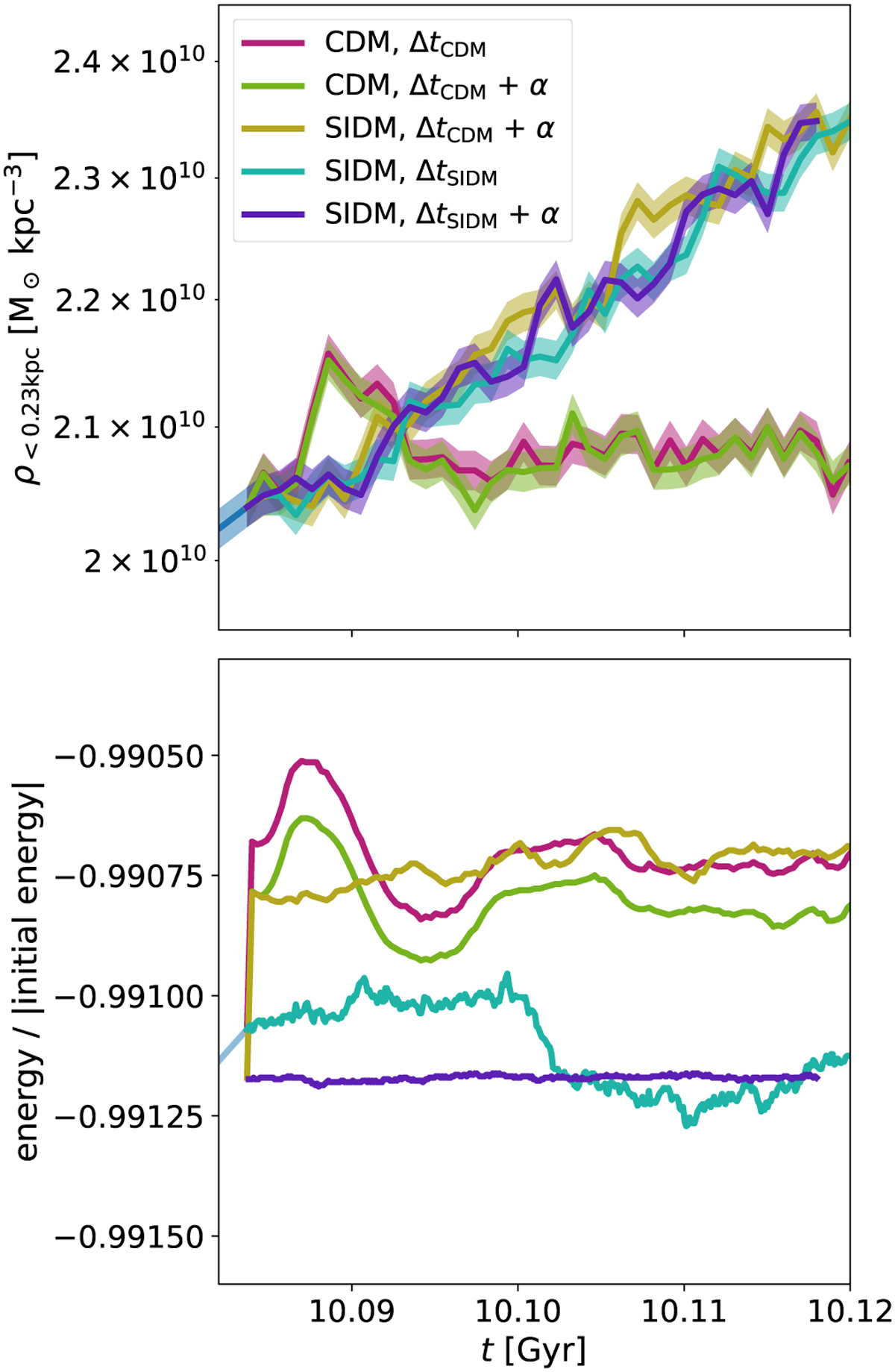Fig. 3

Download original image
Similarly to Fig. 2, we continued the fiducial SIDM simulation (light blue) from t = 10.084 Gyr with a fixed time step and different values for the accuracy of the opening criterion. We showed the ‘CDM, Δ;tcdm’ and ‘CDM, Δ;tcdm + α’ simulations from Fig. 2 plus three simulations with self-interactions. The simulation named ‘SIDM, ΔtCDM + α’ employs the same fixed time step as the CDM simulations (Δt ≈ 3 × 10−4 Gyr) and the more accurate opening criterion (ErrTolForceAcc = 1 × 10−4). For the simulation with the label ‘SIDM, Δtsidm’ we use a fixed time step set by the minimum time step from the fiducial SIDM simulation (Δt ≈ 2.2 × 10−7 Gyr). Here, we use the wide opening criterion (ErrTolForceAcc = 5 × 10−4). In contrast the simulation ‘SIDM, Δtsidm + α’ employs the stricter criterion (ErrTolForceAcc = 1 × 10−4) and the same time step (Δt ≈ 2.2 × 10−7 Gyr). We note that the evolution of the total energy is not continuous as switching to the more accurate gravity also leads to a slightly different estimate of the gravitational binding energy. Also, changing the size of a time step has an impact on the evolution of total energy too.
Current usage metrics show cumulative count of Article Views (full-text article views including HTML views, PDF and ePub downloads, according to the available data) and Abstracts Views on Vision4Press platform.
Data correspond to usage on the plateform after 2015. The current usage metrics is available 48-96 hours after online publication and is updated daily on week days.
Initial download of the metrics may take a while.


